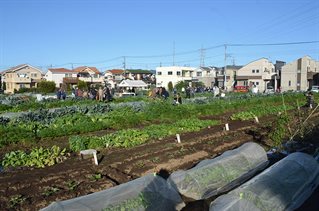Interconnected city spaces at the heart of urban farming through CPUL City Actions
By utilising the research findings and the four-step method, Bohn and Viljoen are now embedded in local authority-led planning and citizen partnerships that can apply the Continuous Productive Urban Landscapes concept.
CPUL City Actions have helped to enable the development of urban food policies by supporting the establishment of citizen groups and food policy councils. Nerima City, for example, a region of Tokyo with a population of 720,000, is testing University of Brighton-inspired designs to interconnect farmland and residential space.
Meanwhile, in Heidelberg, strategic design input into the International Building Exhibition’s beacon project has been incorporated into a post-event design masterplan that will redevelop urban space for sustainable future use. In the city of Andernach, Germany, Bohn and Viljoen’s work has been instrumental for the local council in a project to deliver the country’s first ‘edible city’.
Through Viljoen and Bohn’s innovative design research, the concept of Continuous Productive Urban Landscapes has contributed not only to a new way of thinking about urban sustainability, but to practical and exemplary development, including the establishment of food policy councils in Berlin and Cologne, the developing of food hubs, and initiatives that deliver organic food to 50,000 students at 275 schools in Berlin.

The Kato Farm in Nerima City, Tokyo, is an example of resilient urban landscape and a socially embedded food system, whereby, in emergencies, small amounts of food from many produces can be sent to places in need. (Image courtesy of Bohn&Viljoen 2019).